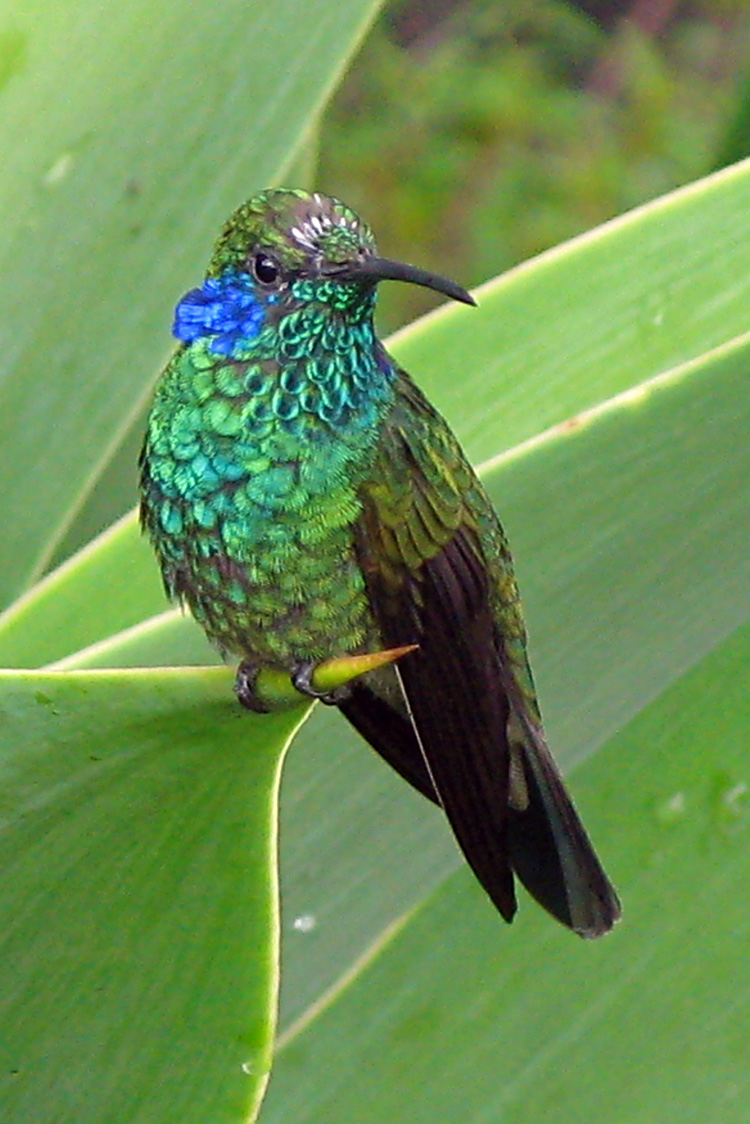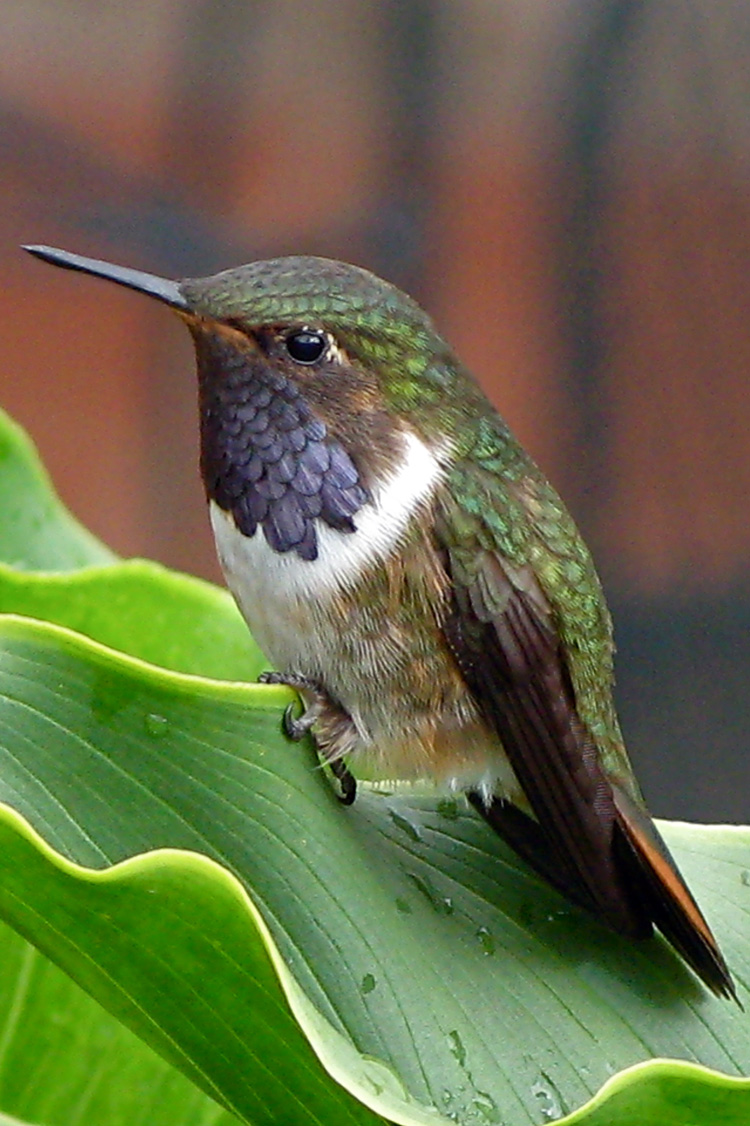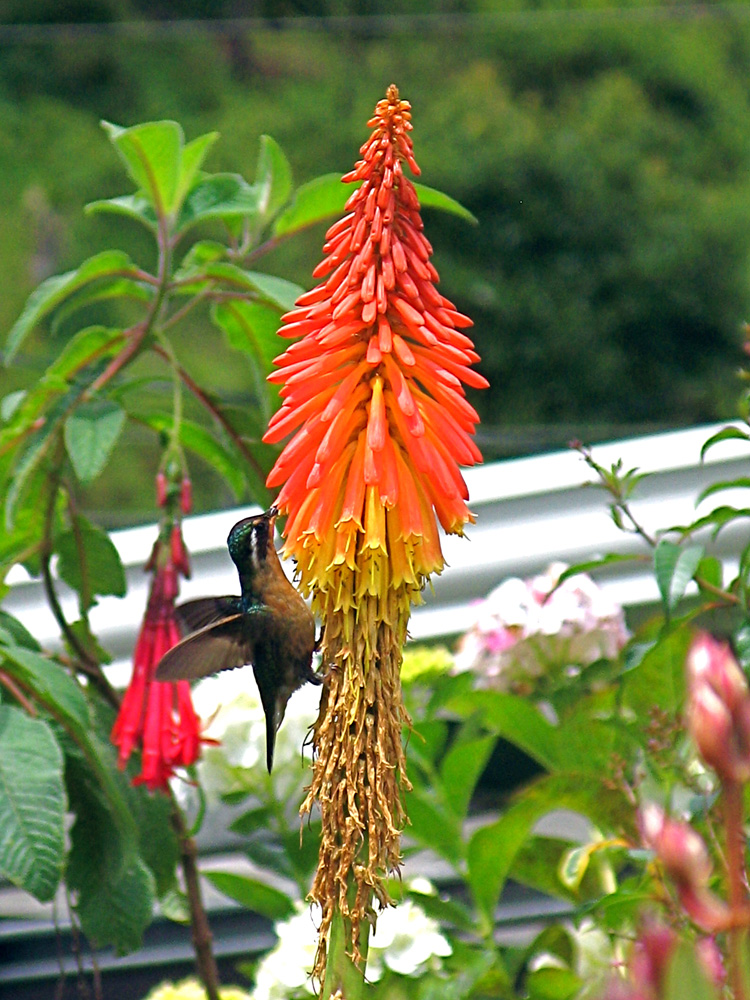Hordes of hummers
Living in Arizona there’s no room for complaint about the quantity and loveliness of the hummers which visit our yard feeders. In the Phoenix area we have Costa’s and Anna’s year round, Black-chinned in summer, with Broad-tailed and Rufous making migratory appearances. I’ve seen a brilliant Broad-billed just two miles from here at the Desert Botanical Garden, so it’s a potential yard bird, as well. Further southeast in the state, hummer numbers swell to around 17 species — by contrast much of the U.S. hosts only one species, the Ruby-throated.
So only a truly spectacular hummer turn-out would impress a southwestern observer. Without doubt, Costa Rica provided that. During a thirteen-day trip, in various habitats and elevations, we saw about 34 species of hummers. Most I couldn’t capture in pixels: with a zoom-impaired camera, the best chance I have for snagging hummingbirds in photos is at feeders. These three posed obligingly on and around the feeders of Savegre Mountain Lodge.
<< Green violet-ear (Colibri thalassinus). These were quite common, and quite beguiling. A bit crabby, too: when another hummer got too near, those violet-ear patches would flare outward. Very threatening; we quailed at the sight. This bird has new feathers molting in on its forehead, visible as tiny white quills, still wrapped in  whitish keratin like shoe-lace ends to facilitate outward growth.
whitish keratin like shoe-lace ends to facilitate outward growth.
>> Right: male Volcano hummingbird (Selasphorus flammula). These little toughies are related to our norte americaño Selasphori like Allen’s, Rufous, and Broad-tailed, and are just as glittery green-gold-bronze. This Cordillera de Talamanca subspecies has a plummy sheen in its gorget, slightly visible in this photo.
And lastly, below is a female White-throated mountain gem (Lampornis castaneoventris) feeding at an aloe, or perhaps a Kniphofia, flower. Her mate (not shown) has a spotless white throat and an azure forehead, but the female is marked with a handsome rusty underside, the “chestnut-belly” of its species name, castaneoventris.
has a spotless white throat and an azure forehead, but the female is marked with a handsome rusty underside, the “chestnut-belly” of its species name, castaneoventris.
(All photos A.Shock)
